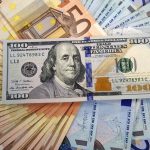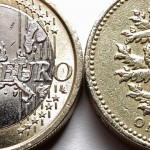At the start of the US trading session, EUR/USD broke below the 50% Fibonacci (1.1357), reflecting the descent from May 3rd high to May 30th low, on the back of upbeat US initial jobless claims. The number of people in the United States, who filed for unemployment assistance for the first time during the business week ended on June 3rd, was reported to have fallen to 264 000, confounding market expectations of an increase to 270 000. If the bearish impulse continues, the pair may found support at the psychological level of 1.1300/the 38.2% Fibonacci level (1.1296) and then at the daily 20-period Exponential Moving Average (1.1275).
GBP/USD almost tested the low from June 7th (1.4433), while marking an intraday low of 1.4449, after which it bounced back to 1.4481-1.4488. Though, there it encountered resistance at the daily 100-period EMA.
USD/CAD remained well supported in the area close to the 1-month low of 1.2655 and regained ground to an intraday high of 1.2765. The upside may be resisted at the 4-hourly 20-period EMA (1.2775) and then – in the area 1.2815-1.2825.
USD/BGN broke above the 50% Fibonacci level (1.7232), reflecting the ascent from May 3rd low to May 30th high. If the bullish impulse continues, the exotic pair may encounter resistance at the psychological level of 1.7300 and then – at the 38.2% Fibonacci (1.7324).
Gold futures are currently trading in proximity to the 61.80% Fibonacci level ($1,263.50), reflecting the descent from May 2nd high to May 30th low, recovering from an intraday low of $1,259.00 per troy ounce. The upside may be resisted at the 76.4% Fibonacci ($1,278.20) and then – at the high from May 17th ($1,281.60).





